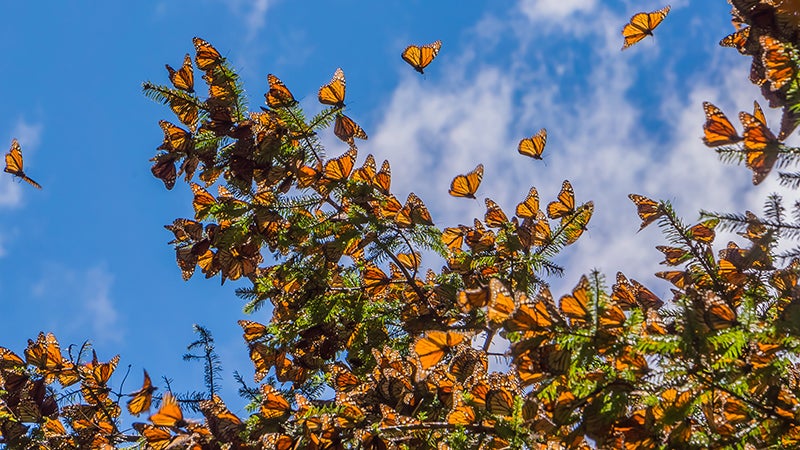Monarch butterflies travel on two wings, a prayer
Published 5:32 pm Friday, September 14, 2018

- Monarch Butterflies on tree branch in blue sky background, Michoacan, Mexico.
|
Getting your Trinity Audio player ready...
|
Joni Carlson
You can’t tell by the hot days lately, but subtle signs of nature are telling us fall is coming. You see it on the side of the roads with goldenrod, mistflower, and narrow-leaved sunflowers blooming. And this makes me happy, because it is a reminder that monarch butterflies are on the move, journeying south to Mexico in their migratory pattern, and these native plants (not weeds) are the intercontinental nectaring highway that will provide the buffet needed for a trip that involves four generations, three countries, three thousand miles, two wings and a prayer!
Monarch butterflies are special. These orange and black beauties do not overwinter in our region. The monarch butterflies we see this fall in our area spend their winter in the mountains of Mexico in high altitudes hanging in clusters on Oyamel trees. They are coming down from Canada, and they are the great-grandchildren (fourth generation) of the butterfly that overwintered in Mexico this past winter.
Here is how the miracle works. The winter generation leave Mexico in early spring (March/April), journey north to Texas (or similar region) where they find their host plant, milkweed, breed, lay eggs, and die. The eggs hatch, caterpillars grow big eating the milkweed, make their chrysalis and hatch. This new generation journeys further north to mid-Atlantic and U.S. states, breed, lay eggs and die. The lifespan at this point is only two or three weeks. Third generation hatch, breed and make it as far as Canada, breed, lay eggs and die. The fourth generation, the “supergeneration,” are born with breeding instincts on hold and bodies ready for super lipid (fat) storage so they can gather nectar (sugars from plant blooms) and have the energy to fly all the way south to those Mexican Oyamel trees. The monarch butterflies will remain through the winter in a semi-hibernating state in clusters. This supergeneration will live for six or seven months total before beginning the journey north in the spring. For those in the regions of the special wintering sites, fall is a celebratory time for them, and awaiting monarch arrival is often part of the traditional “El Dia de los Muertos” (Day of the Dead) and a remembrance of departed love ones.
Awareness of the monarch migratory pattern is a recent discovery (1970s.) Citizen scientists (you!) can aid in continued research by reporting first sightings of milkweed emergence, adult butterflies, eggs, caterpillars, fall roosts, etc., through a global wildlife migration study site called “Journey North” (https://journeynorth.org/about.html).
Tagging monarch butterflies (adhering a small adhesive tag to the monarch wing) in the fall is also a helpful tool. For more information visit https://monarchwatch.org/.
JONI CARLSON is a member of the Western Tidewater Master Gardeners.

